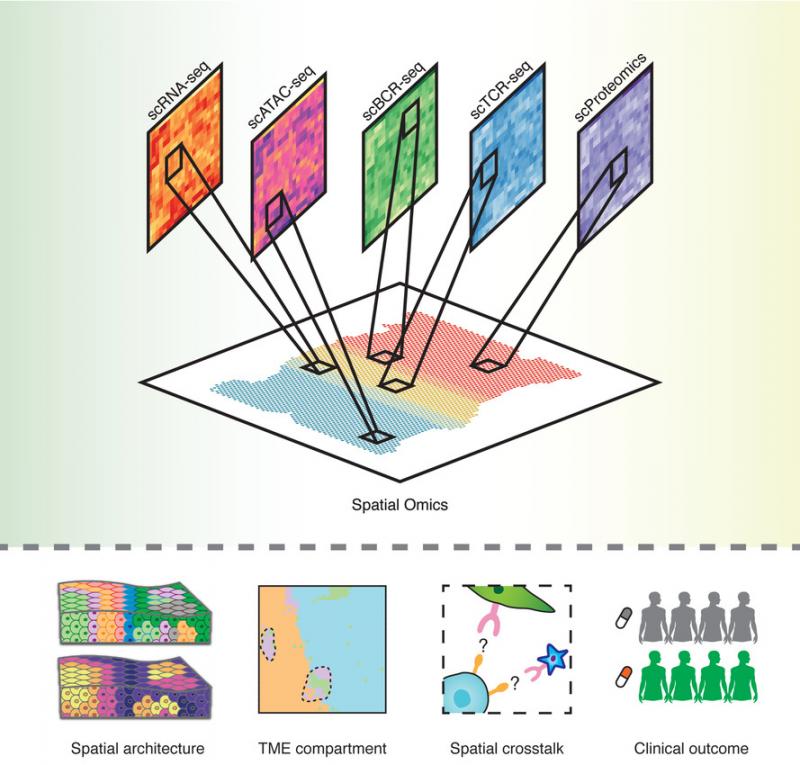In the realm of life sciences and biomedical research, the spatial omics market has emerged as a transformative force, promising to reshape our understanding of biological systems at a level of granularity previously unattainable. Spatial omics integrates a variety of 'omics' technologies—genomics, transcriptomics, proteomics, and more—while incorporating the crucial spatial component. This convergence empowers researchers and scientists to gain comprehensive insights into the distribution and interactions of genes, proteins, and molecules within tissues and organisms. The rapid advancements and potential applications of spatial omics have propelled it to the forefront of innovation, drawing attention from various sectors including pharmaceuticals, diagnostics, and academic research.
Spatial omics effectively bridges the gap that traditional omics techniques left unaddressed—providing not only the genetic information and gene expression patterns but also revealing precisely where these genes are active within tissues. Furthermore, it offers insights into how different cell types functionally interact within their native environments. This groundbreaking capacity has kindled immense interest in the spatial omics market.
A pivotal driver of the spatial omics market's growth is its indispensable role in cancer research. Researchers are harnessing spatial omics to scrutinize tumor microenvironments in unprecedented detail. By doing so, they are deciphering the spatial distribution of cancer cells, immune cells, and other components, thereby unraveling the complex dynamics of tumor progression. This knowledge proves invaluable in identifying potential drug targets, advancing drug discovery, and ultimately, developing personalized cancer therapies. Consequently, pharmaceutical companies are making substantial investments in spatial omics technologies, recognizing their potential to revolutionize the oncology landscape.
Beyond cancer research, spatial omics finds applications in diverse fields, including neuroscience, developmental biology, and immunology. It can elucidate the spatial organization of neurons in the brain, offering fresh insights into neurological disorders. In developmental biology, it provides a window into the intricacies of cell differentiation and organization during embryonic development. In the realm of immunology, it unveils the spatial distribution of immune cells within tissues, enabling a deeper understanding of autoimmune diseases and immune responses to infections.
The spatial omics market encompasses various technologies and platforms, each contributing distinct advantages. Among these, spatial transcriptomics stands out as a prominent player, enabling researchers to map gene expression at the cellular level within tissue sections. This technology has gained substantial attention due to its ability to provide spatially resolved gene expression data.
Another noteworthy component of the spatial omics market is single-cell RNA sequencing (scRNA-seq). It complements spatial omics data by offering high-resolution insights into individual cells within tissues. The integration of scRNA-seq with spatial omics techniques provides a holistic understanding of cellular heterogeneity within tissues.
Furthermore, the spatial omics market continues to advance in terms of data analysis and bioinformatics tools. The complex and vast datasets generated by spatial omics necessitate sophisticated algorithms and software solutions to derive meaningful insights. The evolution of these tools plays a pivotal role in driving the adoption of spatial omics technologies.
In conclusion, the spatial omics market is on a trajectory of significant growth, propelling scientific discovery and innovation to new heights. Its applications in various disciplines are expanding our comprehension of intricate biological processes. With ongoing technological advancements and the development of robust data analysis tools, spatial omics is poised to leave an indelible mark on both basic research and clinical applications. As more researchers, industries, and stakeholders recognize its transformative potential, we anticipate further breakthroughs and investments in this captivating field. The spatial omics market, with its capacity to unlock the mysteries of spatial biology, promises a future where precision medicine and biology converge in extraordinary ways.
Read Our More Blogs : https://healthcarenewsbulletin.blogspot.com/2023/09/exploring-growth-potential-of-spatial.html
